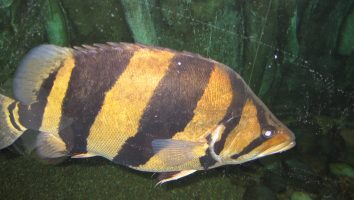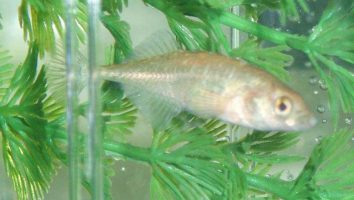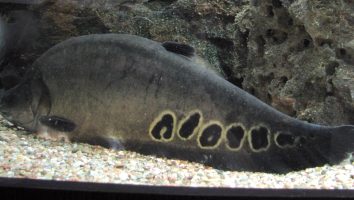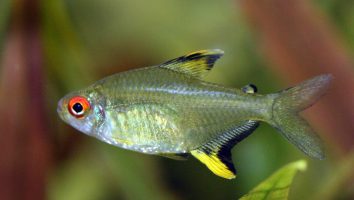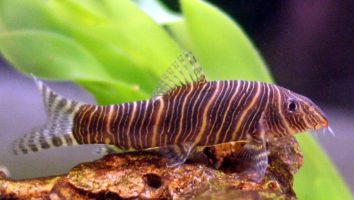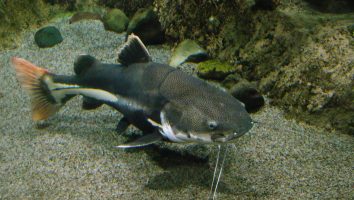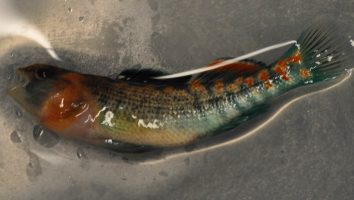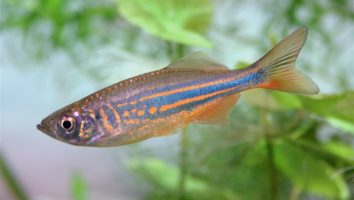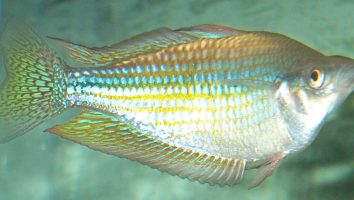The X-ray tetra is a freshwater fish that is well known for its unique appearance.
This fish gets its name from the fact that its skeleton is visible through its translucent skin.
The X-ray tetra is a popular fish in the aquarium trade and is relatively easy to care for.
In this guide, we will go over everything you need to know about X-ray tetra care. This includes tank size, diet, lifespan, and more!
Table of contents
Species overview
The X-ray tetra (Pristella maxillaris) is a freshwater fish that’s native to the Orinoco River basin in South America.
They are a schooling fish that prefers to live in groups of at least 6-8 fish. This is something to keep in mind when stocking your tank because you’ll need to have enough space to accommodate a group of them.
They are a peaceful fish that gets along well with other tank mates. However, they can be shy so it’s best to avoid putting them with fish that are much larger or more aggressive.
The X-ray tetra is a popular fish because of its unique appearance. It has a clear body with a black stripe running down the center. This stripe is what gives the fish its name.
Appearance
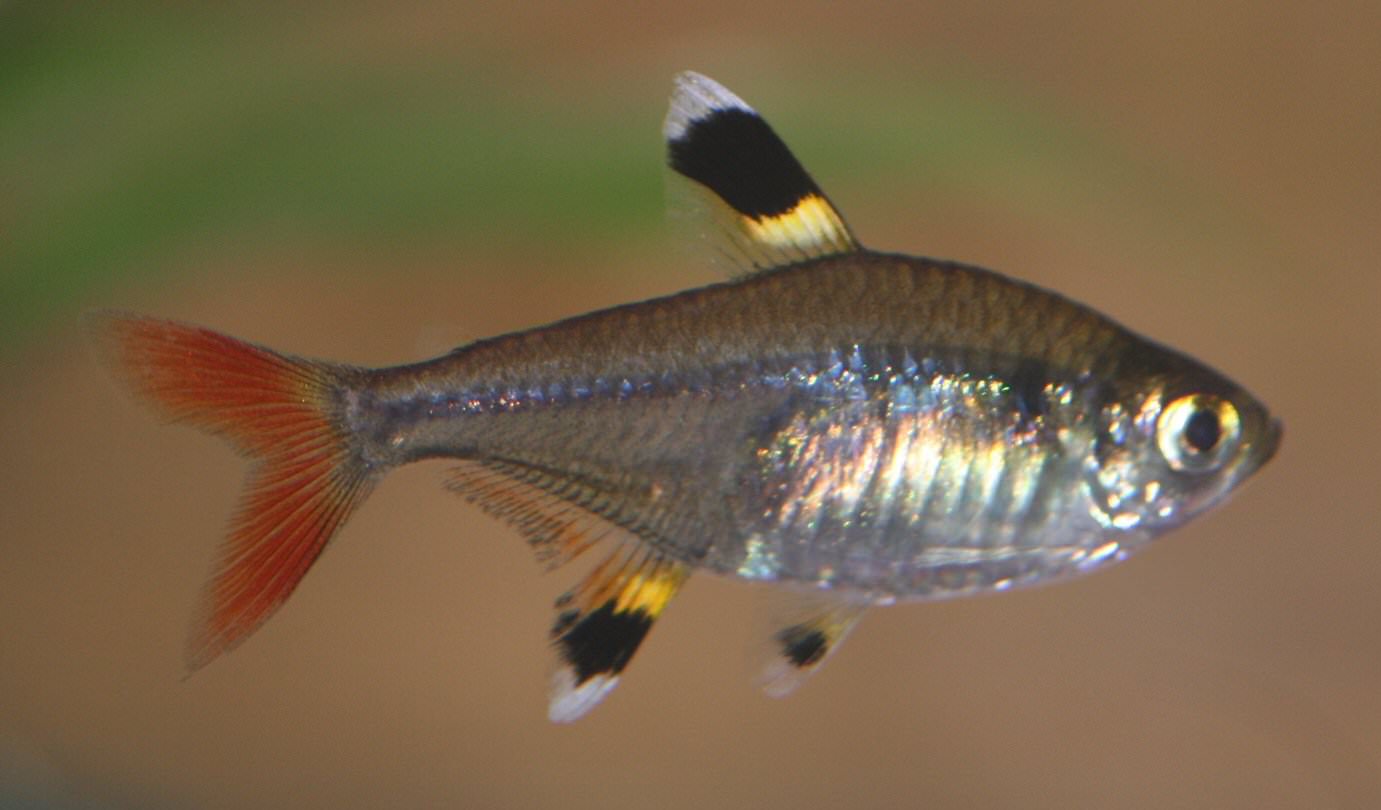
The X-ray tetra is a very interesting looking fish that gets its name from its unique skeletal structure. You can actually see right through their body!
These small freshwater fish are mostly transparent with a slight blue tint. If you look closely, you can see their internal organs and skeleton.
The fins on these fish are also mostly transparent. The dorsal fin is slightly taller than their anal fin and both are located towards the back half of the body.
The caudal fin is forked and symmetrical. The pectoral fins are located just behind the gill plate and are used for steering and stopping.
X-ray tetras have a small mouth that is located at the front of their head. They have small eyes that are set far apart.
Lifespan
The average lifespan of a X-ray tetra is 5 to 8 years, although some have been known to live up to 10 years. These fish are relatively long-lived for such small creatures!
As with any fish, the lifespan of a X-ray tetra can be impacted by a number of factors. Some of the things that can shorten their lifespan include poor water quality, stress from bad tank mates, or a suboptimal diet.
Size
The X-ray tetra is a small freshwater fish that only grows to be about 1.5 inches in length.
Tank
Tank Size
The minimum tank size for an X-ray tetra is 15 gallons. If you’re looking for a freshwater fish that can fit in an average-sized tank, this is a good option.
One thing to keep in mind is that X-ray tetras are schooling fish. This means that they do best when they’re kept in groups of at least 6 fish. So, if you’re planning on keeping a school of X-ray tetras, you’ll need a larger tank that can accommodate all of them.
Water Parameters
The X-ray tetra (Pristella maxillaris) is a freshwater fish that’s native to the rivers of South America.
They’re a schooling fish that prefer to live in groups of 6 or more. They’re also known to be peaceful, making them a good community fish.
X-ray tetras are a hardy fish that can live in a variety of water conditions. However, to ensure a long and healthy life, it’s best to stick as close to their natural habitat as possible.
Here are a few water parameters to keep in mind when setting up an X-ray tetra aquarium.
- Water temperature: 72 to 82 degrees Fahrenheit
- pH levels: 6.0 to 7.8
- Water hardness: 2 to 12 dGH
- Alkalinity Levels: 3-10 dKH
What To Put In Their Tank
When it comes to decorating the inside of their tank there are a few things you’ll want to consider.
First and foremost, these fish come from rivers and streams in the wild. This means that they’re used to a lot of water movement. To replicate this in their home aquarium you’ll need to use a filter that produces a decent amount of flow.
We also recommend using a substrate that’s on the darker side. This will help to make your fish feel more comfortable since it will provide them with some shelter from the bright lights above.
As for plants, you can use whatever you want. Just be aware that these fish like to nibble on vegetation so anything you put in their tank should be able to withstand some damage.
Finally, we recommend using some driftwood or rocks to help recreate their natural habitat. These can also provide some additional hiding spots for your fish.
Common Diseases
These little fish are quite hardy and don’t often get sick. However, when they do it’s usually because of one of two things: ich or poor water quality.
Ich is a very common freshwater fish disease that causes white spots to appear on the body, fins, and gills of your fish. It’s usually not too serious, but it can be if it’s left untreated.
The other disease that these fish are susceptible to is poor water quality. This can cause all sorts of problems, from respiratory infections to skin irritation.
The best way to prevent these diseases is to simply keep the water in their tank clean and of good quality. Regular water changes and using a good filter will go a long way in keeping your fish healthy.
Behavior & Temperament
The x-ray tetra is a peaceful community fish that does well in groups. They are relatively active, but prefer to stay near the middle or bottom of the tank.
These fish are known for being shy, so don’t be surprised if they spend a lot of time hiding when you first introduce them to their new environment. They’ll eventually come out when they feel comfortable, but it may take some time.
Once they’re acclimated, they’ll be more active and interactive. X-ray tetras are known to be good jumpers, so be sure to have a tight-fitting lid on your aquarium.
These fish are also known to be nippy, so they may not do well with long-finned fish or slow-moving fish. They are more likely to nip at the fins of fish that they perceive as a threat or competitor.
Tank Mates
The x-ray tetra is a small, peaceful fish that does well in a community tank. There are many different species of fish that make compatible tank mates for x-ray tetras.
Some good choices include other peaceful fish such as:
- Neon Tetras
- Cardinal Tetras
- Guppies
- Mollies
- Platies
- Swordtails
- Endler’s Livebearers
- Harlequin Rasboras
- White Cloud Mountain Minnows
It’s best to avoid tank mates that are too large or aggressive. X-ray tetras are small and peaceful fish that can easily be bullied or eaten by larger fish.
Breeding
The X-ray tetra is a fairly easy fish to breed in captivity. The first thing you need to do is set up a breeding tank. It should hold at least 20 gallons of water.
Then, add some plants and other decorations. The plants are important because they give the female somewhere to lay her eggs. She’ll usually lay them on the underside of a leaf.
The water temperature should be around 80 degrees Fahrenheit. The pH should be between 6.5 and 7.5.
When ready, add two females for every male. The males are easy to identify because they have longer fins.
The fish will start to breed on their own. The female will lay her eggs and the male will fertilize them.
After the eggs have been fertilized, the male will guard them. He’ll keep them clean and make sure they have enough oxygen.
The eggs will hatch in about 24 hours. The fry will be able to feed on the plants in the tank. You can supplement their diet with baby brine shrimp or crushed-up flake food.
As the fry grow, you can slowly start to add adult fish to the tank.
Conclusion
The X-ray tetra is a great fish for beginners and experienced aquarists alike. They’re easy to care for and have a beautiful, unique appearance that will make your tank stand out.
While they can be a little nippy, they’re typically peaceful fish that will get along with most other community fish.
Overall, we think the X-ray tetra is a great choice for anyone looking for a new fish for their tank!

